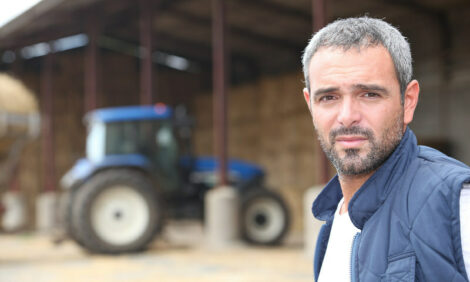



SITES Certifies Novus International Campus
US - The global headquarters campus of Novus International, Inc. is one of the first pilot projects to be certified by the Sustainable Sites Initiative (SITES) for its sustainable site design, construction and maintenance. The Novus campus, lead by landscape architects SWT Design, was awarded a 3-star rating by SITES, making it the highest rated landscape project in the world."This level of certification represents the company’s commitment to minimizing our impact on the environments in which we operate," said Novus President and CEO, Thad Simons. "Our successful application of land and development practices proves that companies can achieve a healthy sustainable work environment while reducing operating costs."
SITES is an interdisciplinary effort led by the American Society of Landscape Architects, the Lady Bird Johnson Wildflower Center at The University of Texas at Austin and the United States Botanic Garden to create voluntary national guidelines and benchmarks for sustainable land design, construction and maintenance practices. Certification for the pilot rating system is based on The Sustainable Sites Initiative: Guidelines and Benchmarks 2009.
In May 2010, Novus's campus was one of more than 150 national and international projects to be chosen by the SITES partners to test out the 4-star rating system and guidelines.
Novus is a global leader in animal health and nutrition with a strong emphasis on Corporate Social Responsibility and Sustainability. Sustainability at Novus is founded on the triple bottom line: social, economic, and environmental factors. The company's global headquarters, located at the Missouri Research Park in St. Charles, Missouri, is a 9-acre site that has been developed to a new standard for sustainable site design.
The project addresses several sustainable design best practices including hydrology, wildlife habitat enhancement and monitoring, as well as improved soils and vegetation. There is an emphasis on using regional materials and implementing features that address human health and well being of site visitors and employees.
"We are pleased to be among those taking a lead in applying the SITES rating system to enhance the environmental, social and economic aspects of our projects," said Hunter Beckham, Principal at SWT Design, who was the project manager for the pilot project effort. Ted Spaid, Co-Founding Principal at SWT Design was the design lead. "This 3-star certification is evidence of our commitment to the environment, to our communities and to both Novus and SWT Design’s passion for sustainability."
Among the specific sustainable design benchmarks met by the Novus Campus are:
- Improved human health and well being for site users
- Improved hydrology both on and off site
- Habitat improvements to various locations throughout the project site
Among those on the project team:
- Client: Novus International, Inc.
- SWT Design
- Landesign LLC
- University of Missouri
- Cowell Engineering
- Stock & Associates Consulting Engineers, Inc.
- Show Me Rain Gardens
- St. Louis Zoo
- National Wildlife Federation
- Missouri Botanical Garden
- Whitmire Wildflower Garden
- Horticulture Co-op of Metro St. Louis
- Missouri Prairie Foundation
- Great Rivers Greenway
- Eastern Missouri Bee Keepers Association
Since 2005, the SITES partners, in conjunction with a diverse group of stakeholder organizations, have worked to transform land development and management practices with this first national rating system for sustainable landscapes. The guidelines apply to any type of designed landscape, with or without buildings, including shopping malls, streetscapes, subdivisions, corporate and academic campuses, transportation corridors, parks and recreation areas, and single family homes.
The US Green Building Council, a stakeholder in the Sustainable Sites Initiative, anticipates incorporating the SITES guidelines and performance benchmarks into future iterations of its LEED Green Building Rating System. While LEED minimizes the carbon footprint, SITES demonstrates how a landscape can actually sequester carbon and regenerate living systems. Working together, these initiatives will further revolutionize sustainable design.
The SITES Rating System includes 15 prerequisites and 51 different credits, measuring performance in areas such as the initial site selection, water, soil, vegetation, materials, human health and well being, construction and maintenance – adding up to a 250 point scale. The rating system recognizes levels of achievement by obtaining 40, 50, 60 or 80 percent of available points with one through four stars, respectively.








